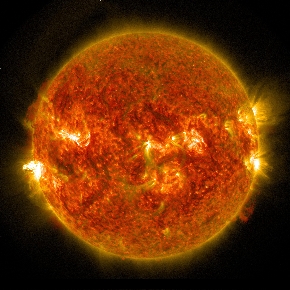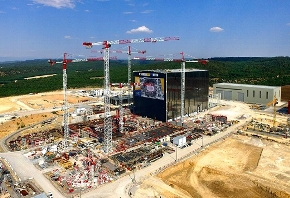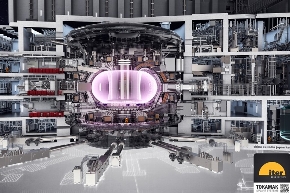Katayama Lab conducts education and research in the field of energy chemistry engineering.
Interdisciplinary Graduate School of Engineering Sciences (IGSES),
Kyushu University, JAPAN
Kyushu University, JAPAN
 Fusion Energy
Fusion Energy
The energy of the stars shining in the night sky is due to the nuclear
fusion reaction.The energy released when a nucleus collides with another
nucleus and a new nucleus is created by a fusion reaction is one million
times as much as the energy released by a chemical reaction. The sunlight
that falls on the earth is also produced by the nuclear fusion reaction.
A fusion reactor is an attempt to artificially control a fusion reaction
and extract its enormous energy as electricity or heat. In order for us,
and our children's children, and their children's children, to live peacefully
for a long timecontinue to benefit from the development of science and
live a comfortable and enjoyable life all over the world, research and
development of fusion reactors is underway.

From NASA's web site
ITER project
Japan, Europe, the United States, Russia, China, South Korea, and India are collaborating to build the fusion experimental reactor ITER for the purpose of scientific and technical demonstration of fusion energy utilization in Cadarache, France. The first plasma will be ignited in 2025, and full-scale fusion experiments will begin in 2035.Isn't it an attractive research target for those who want to become scientific researchers in the future? Let’s be a world-leading researcher and lead the ITER project to success!

ITERのwebサイトより
Related research in our Lab.
- Understanding of the bred tritium behavior and development of the recovery system
In our laboratory, we are studying both liquid breeding materials and solid breeding materials, and we are conducting a wide range of research from basic research for understanding tritium behavior to development of tritium separation and recovery systems.Engineering equipment that produces tritium and recovers heat is referred to as a tritium breeding "blanket." The blanket is the most important device for utilizing fusion energy.
- Understanding of tritium behavior in plasma facing wall
Fusion plasma experiments using graphite as the wall material revealed that a large amount of fuel hydrogen isotopes are incorporated into the deposition layer. This meant that some of the fuel supplied to plasma continuously accumulate in the walls without fusion reaction, that was a revire problem that threatened the realization of a fusion reactor.
In our laboratory, we are working on the understanding of hydrogen isotope behavior in the deposition layer, focusing on tungsten, which is expected as a promising wall material to replace graphite.We also plan to study the effects of neutron irradiation on tritium behavior.
Contents
(since 2015/6/10)
Current viewers
Address
Katayama Laboratory
〒816-8580
6-1, Kasuga-koen, Kasuga, Fukuoka, JAPAN,
H Building, Chikushi Campus